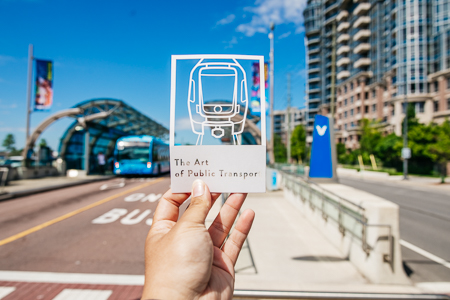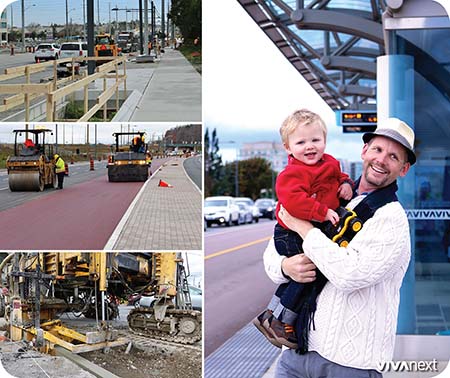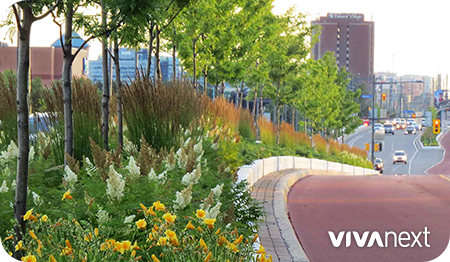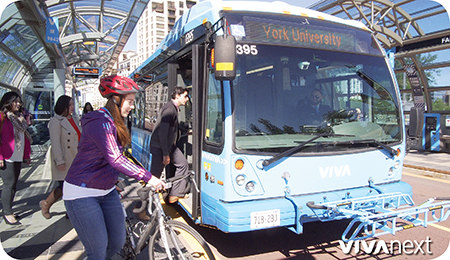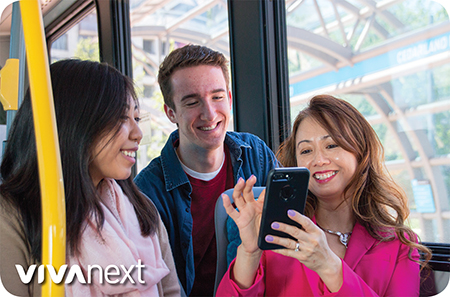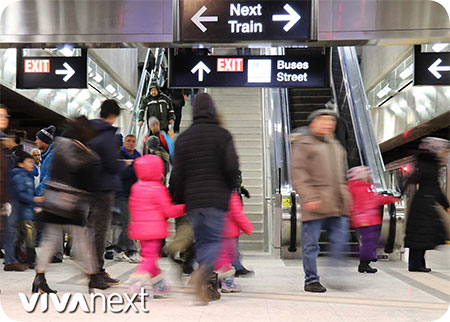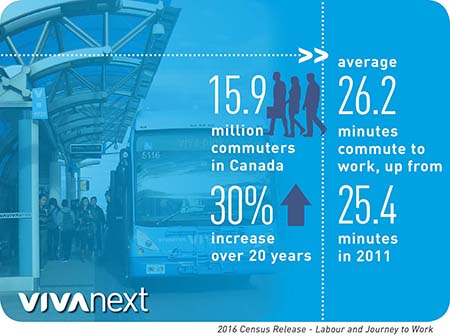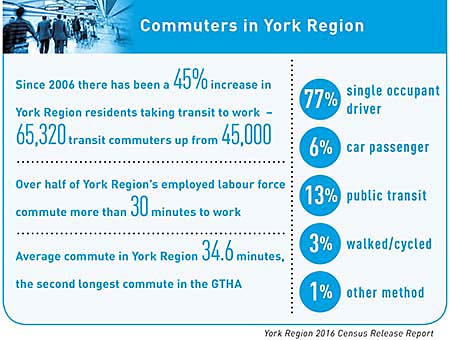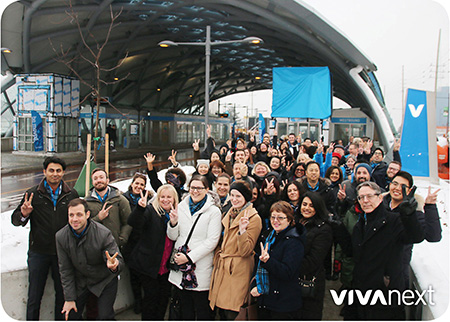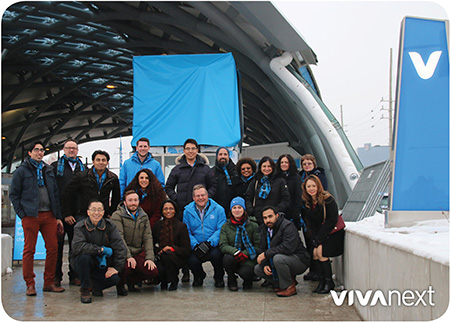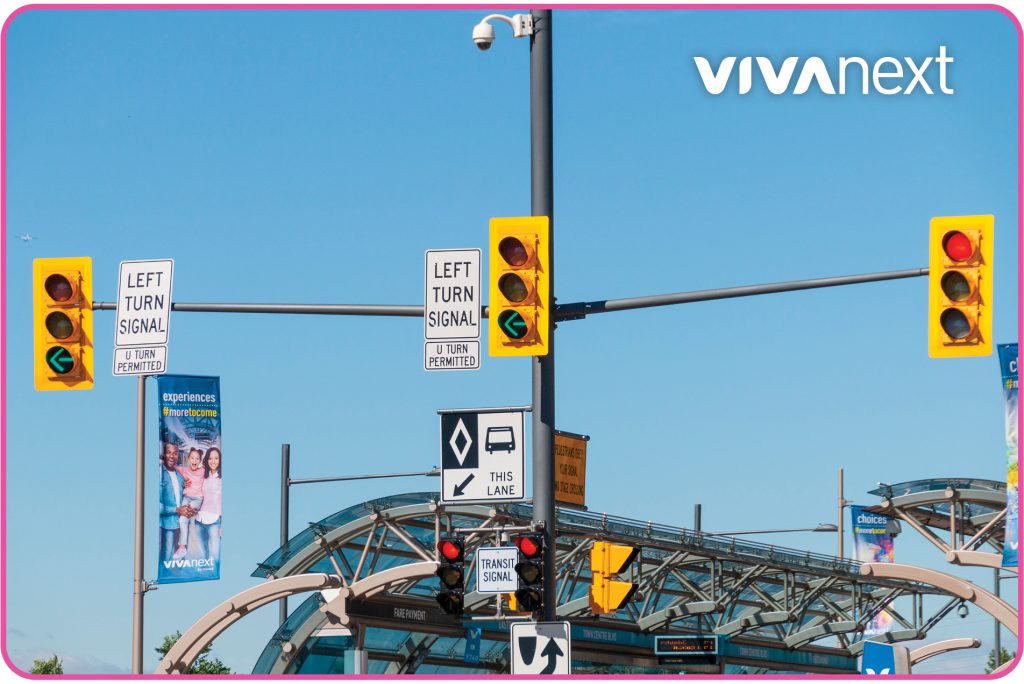
As you can imagine, we think about traffic signals quite a lot here at vivaNext. They’re a part of everyday life and are essential to get from point A to point B for all users, including transit customers, pedestrians, cyclists and motorists. The stages of rapidway construction have their own traffic signal stages: temporary and permanent.
When construction begins on any of the vivaNext rapidway projects – such as the vivaNext Yonge Street rapidway project in Richmond Hill – traffic patterns and intersections shift to accommodate the new rapidway lanes. Therefore, temporary traffic signals are installed at signalized intersections. Here are some of the changes you’ll notice:
- Vehicle detection technology – “loops”: Prior to rapidway construction and on completed projects, vehicle detection at signalized intersections is done with induction loops embedded in the road that sense vehicles above them. The loops detect vehicles, resulting in a change in the electrical field. This change is transmitted to activate the traffic signals based on the number of cars waiting.
- Temp signals and sensors: During construction, however, temporary (“temp”) traffic signals are installed without loops. Since construction activities can damage them, and changing lane configurations can position cars outside of the loops, they can’t be used. So to keep traffic flowing at its best during construction, “Wavetronics Smart Sensor Matrix” technology is installed above the roadway at signalized intersections. This system uses radar sensors designed to detect and manage multiple lanes of traffic. It creates an image which allows the sensors to track the position of each car at the intersection, and activate traffic signals based on the number of cars at any given time. Sometimes, during times of high winds, the sensors can shift – and you may experience longer wait times at these intersections until crews can readjust the sensors.
- New loops are installed during final paving: During the final paving stage of construction – before the permanent traffic signals are activated on each of the rapidway projects – new induction loops are embedded in the roadway.
- Signal phases and protected left-turns: Each of the signals that an intersection produces [green, amber and red lights as well as transit signals] are called a phase. One of the new phases that the rapidway project introduced along Yonge is the protected left-turn signal [indicated by the green arrow]. This signal allows drivers to make left-turns and U-turns only while the left-turn signal is displayed, which allows for access to properties that are on the opposite side of the road. This phase also allows for improved traffic flow and fewer collisions, as vehicles no longer have to cross multiple lanes of opposing traffic.
- Signal cycles: Signal phases together make up a cycle – the total time between the start of a specific display until that display comes up again. Additional time has been added to traffic signal cycles on Yonge, in order to accommodate the phase of a protected left-turn. For instance, if a cycle length at an intersection was previously 130 seconds before construction, it may now be 140 seconds to accommodate for the protected left-turns.
- Transit signals: When the rapidway opens for service, buses will be traveling down the centre rapidway lanes for a faster and more convenient transit experience. They will have their own bus signals at each intersection that are connected to a GPS within each bus, and work in conjunction with the regular traffic signals.
have a question?
To ensure transit, pedestrians, cyclists and motorists move through intersections safely and efficiently during rapidway construction, the constructor regularly reviews traffic signal timing and makes any necessary adjustments. If there appears to be traffic signal timing issues, please contact your Community Liaisons and they would be happy to look into your concern.

